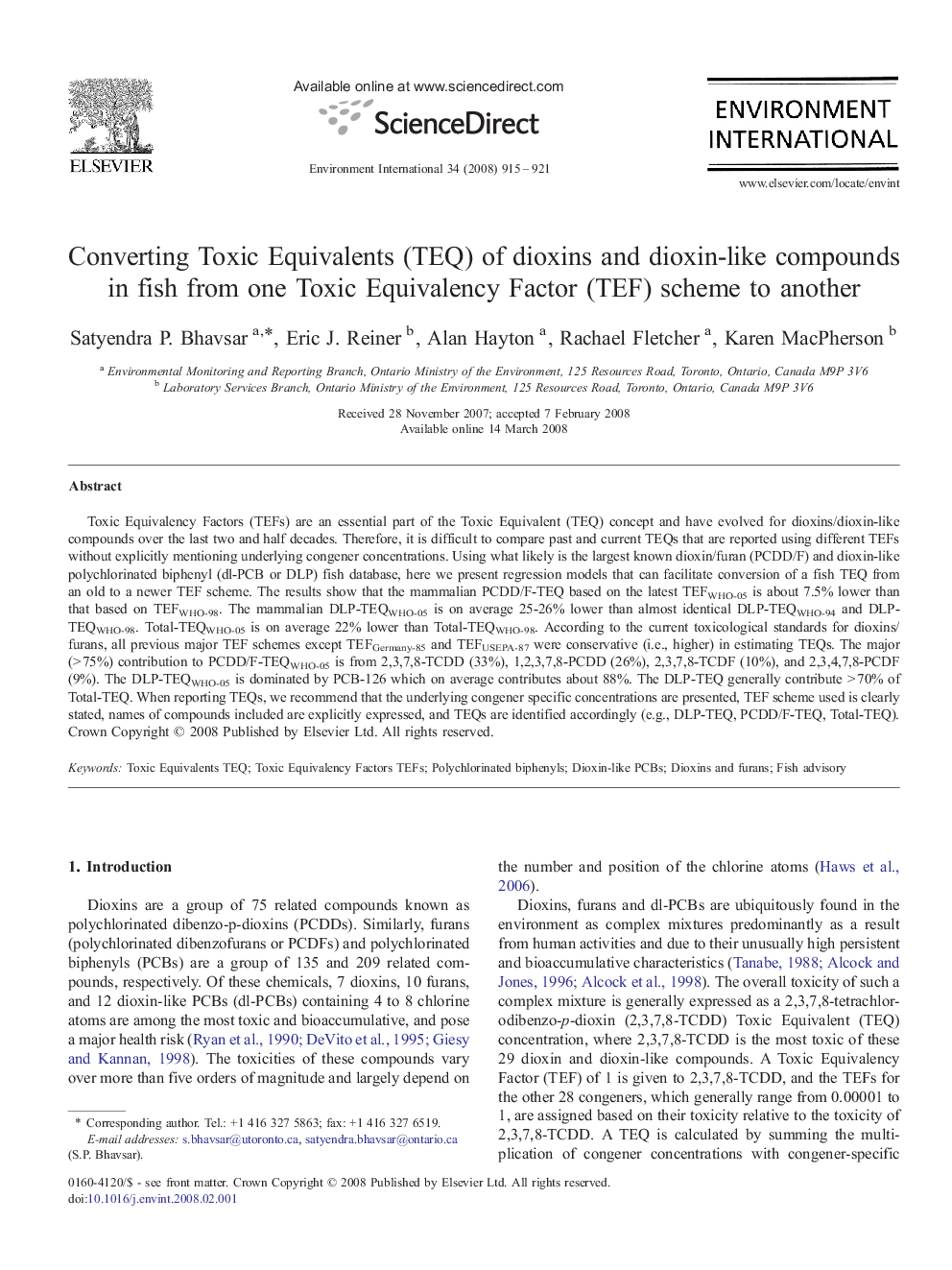| Article ID | Journal | Published Year | Pages | File Type |
|---|---|---|---|---|
| 4423683 | Environment International | 2008 | 7 Pages |
Toxic Equivalency Factors (TEFs) are an essential part of the Toxic Equivalent (TEQ) concept and have evolved for dioxins/dioxin-like compounds over the last two and half decades. Therefore, it is difficult to compare past and current TEQs that are reported using different TEFs without explicitly mentioning underlying congener concentrations. Using what likely is the largest known dioxin/furan (PCDD/F) and dioxin-like polychlorinated biphenyl (dl-PCB or DLP) fish database, here we present regression models that can facilitate conversion of a fish TEQ from an old to a newer TEF scheme. The results show that the mammalian PCDD/F-TEQ based on the latest TEFWHO-05 is about 7.5% lower than that based on TEFWHO-98. The mammalian DLP-TEQWHO-05 is on average 25-26% lower than almost identical DLP-TEQWHO-94 and DLP-TEQWHO-98. Total-TEQWHO-05 is on average 22% lower than Total-TEQWHO-98. According to the current toxicological standards for dioxins/furans, all previous major TEF schemes except TEFGermany-85 and TEFUSEPA-87 were conservative (i.e., higher) in estimating TEQs. The major (> 75%) contribution to PCDD/F-TEQWHO-05 is from 2,3,7,8-TCDD (33%), 1,2,3,7,8-PCDD (26%), 2,3,7,8-TCDF (10%), and 2,3,4,7,8-PCDF (9%). The DLP-TEQWHO-05 is dominated by PCB-126 which on average contributes about 88%. The DLP-TEQ generally contribute > 70% of Total-TEQ. When reporting TEQs, we recommend that the underlying congener specific concentrations are presented, TEF scheme used is clearly stated, names of compounds included are explicitly expressed, and TEQs are identified accordingly (e.g., DLP-TEQ, PCDD/F-TEQ, Total-TEQ).
